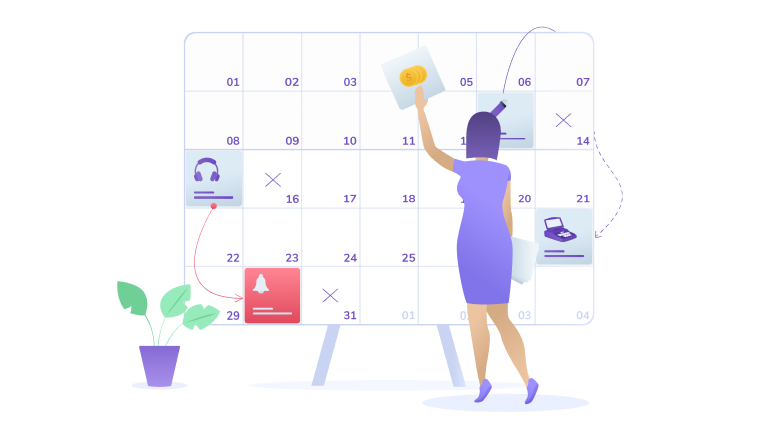Welcome to Lesson 3 of Time Management for Transcript Pros! Who knew a simple calendar trick could change your life? Get More Done with Time Blocking.
“Either you control your calendar, or it controls you.â€Â
In the last two lessons, we learned how to set SMART goals and prioritize our time using the Eisenhower Matrix.Â
In this lesson, planning meets reality: On your calendar!
Goal-setting and prioritizing won’t do you any good if you don’t have a schedule for focused work time. Many of us rely on to-do lists to plan our days, but they are far from perfect.Â
Sure, lists are fine for capturing what needs to be done, but they don’t tell us WHEN to do those things. Even a prioritized to-do list can only get you so far.Â
That’s why many of the most productive court reporters are ditching to-do lists for a technique called time blocking.
Time blocking is one of the best ways to boost productivity, even in the face of daily distractions. In this lesson, you’ll learn why this technique is so effective and how you can implement it TODAY.Â
What is time blocking?
Time blocking is the practice of scheduling “blocks” of time for specific types of activities. The goal is to have all of your time scheduled and accounted for.Â
ALL of it?Â
Yes, ALL of it! From the moment you get up to the moment you go to sleep, you should have all of your waking hours blocked off for a purpose — even if that purpose is “goofing off,†watching TV, or checking your email.Â
Trust us, time-blocking isn’t as difficult as it sounds, and it works wonders for productivity.
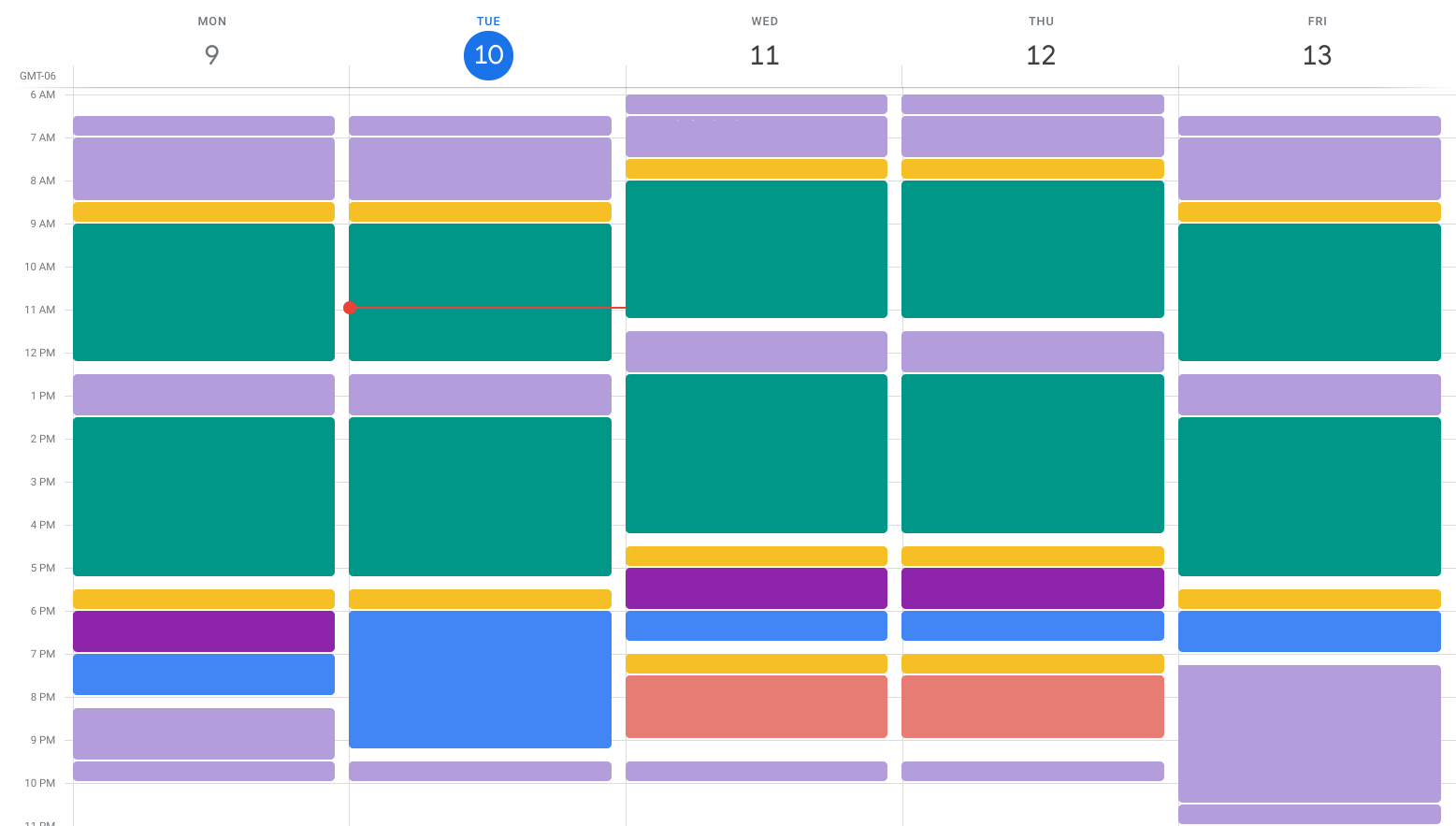
Why does time blocking work?Â
Time blocking is a tried-and-true technique that’s backed by neuroscience. Some of the most productive people in history have used time blocking. If it works for Bill Gates, it can work for you!
Here are three reasons why time blocking is so effective:
It prevents distraction.
Time blocking forces us to take on one task at a time. It also makes it easier to say ‘no’ when an unexpected distraction pops up. (Remember Quadrants 3 and 4 from our last lesson? Get outta here!). And even when we have to deviate from our schedule (because of Quadrant 1 fire drills), time blocking helps us get back on track.
It helps you prioritize your most important tasks.
In Lesson 2, we discussed the power of Quadrant 2: Important but Not Urgent activities. Time-blocking ensures you set aside time for Q2 tasks (like taking a depo and family time). Even if your day doesn’t go perfectly, setting the intention of focus pays dividends over time.Â
Have you ever heard the old parable about rocks, pebbles, and sand? If not, here’s a short video. The lesson is simple: Plan around your top priorities (your rocks), or you won’t ever find time for them.
It protects your personal life.
Time blocking isn’t just good for our work life. It’s equally critical for a healthy personal life.Â
Every single court reporter (and scopist and proofreader) has pulled some late nights, trying to meet a deadline. I’m guessing most of us have even had to skip an event we were really looking forward to (like dinner w/ a friend or a child’s event) to get an expedite out the door. Time blocking puts personal activities on equal footing with work activities because both are scheduled on your calendar.Â
Exercise: Use time blocking to improve productivity.
We get it. Scheduling out every minute of your day sounds daunting. But we promise it’s not as tough as it sounds. Follow the five steps below to begin time-blocking TODAY:
1. Create a time blocking template.
It’s easier to tackle time blocking when you create a template first. You only have to do it ONCE, and then 90% of the work is already done.
A time blocking template breaks up your day into large chunks for different buckets of activities. Create blocks of time for your morning routine, work hours, break times, and personal time.Â
Here’s an example of a time blocking template: Â
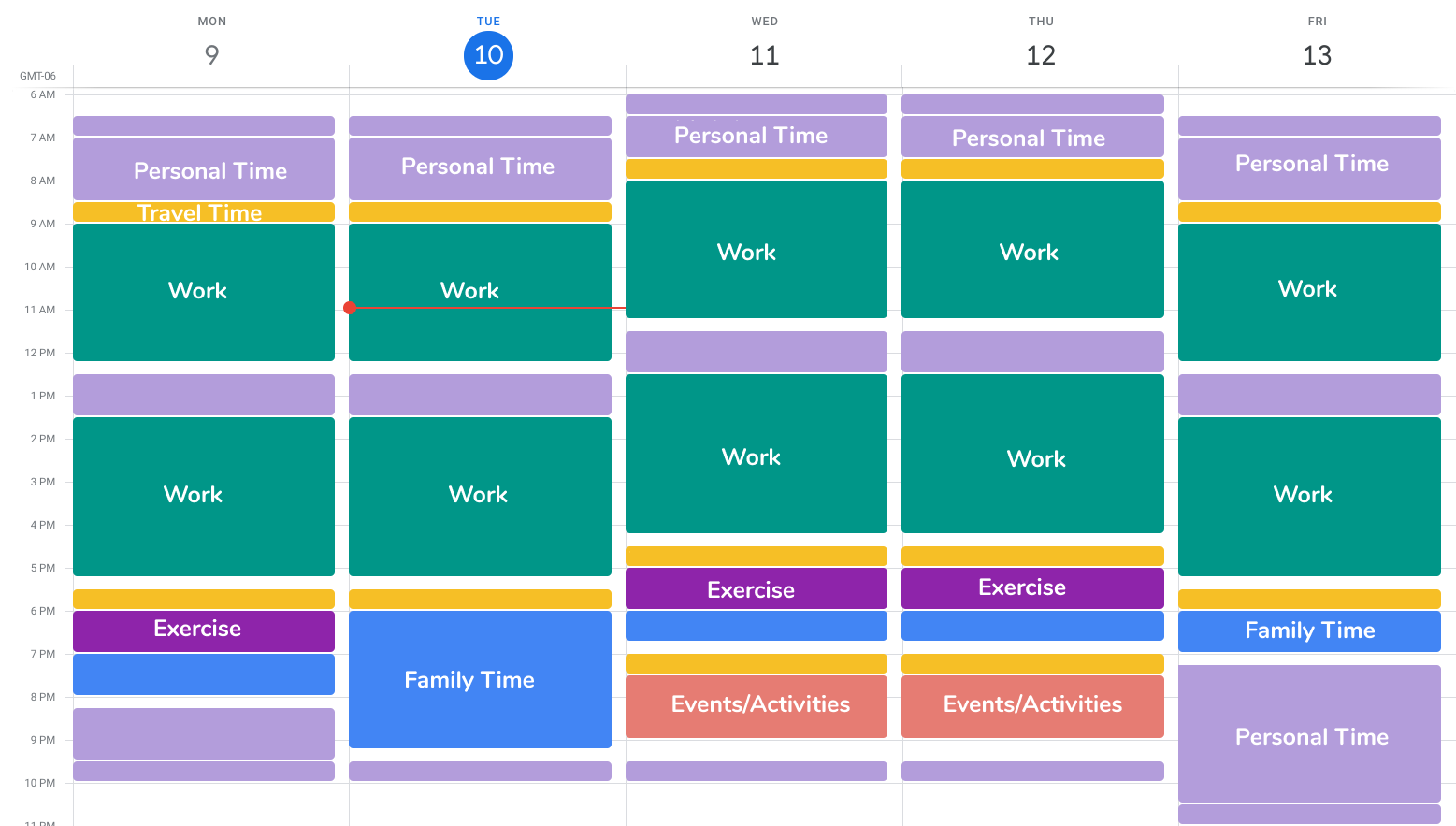
As a freelance reporter, you may be looking at this template and saying, “I never know what my work schedule looks like.” That’s exactly why you should create a template and then adjust it the night before, once you know your work obligations for the following day.
You can actually set up recurring events on most calendars. We like Google Calendar, but any calendar will work. We also love reporting agencies that send calendar invites, so you can add the event to your calendar.
If you’re more of a paper person, there are loads of planners you can purchase on Amazon. The only downside of a paper planner is that you can’t set up a template, so you have to write down the same recurring events over and over. To each their own.
2. Set aside time to schedule your week.
With your template in hand, schedule a regular time to plan your week. Yes, you heard us. Schedule your scheduling. We’re not kidding!
This could be a Sunday night, Saturday morning, or even Friday afternoon of the previous week.
Whatever you choose, make sure you can stick to it at least 90% of the time. Â
If you have your template done, you just need to look at the week ahead to determine if anything is out of the norm and plan accordingly. For example, if little Tina has a dance recital Thursday night that isn’t a weekly thing, you may need to do some slight rearranging.
3. Schedule your most important activities first.
When planning your week, schedule your most important (but not necessarily urgent) activities first — also known as Quadrant 2 tasks.Â
Otherwise, urgent tasks can take over your day, even if they aren’t important. Â
Q2 activities can be both personal and professional:
🎯 Spending time with family
🎯 Managing your transcripts and transcript team (scopists and proofreaders).Â
🎯 Exercise
🎯 Speed practice
Here’s an example of an official reporter’s time-blocked schedule:Â
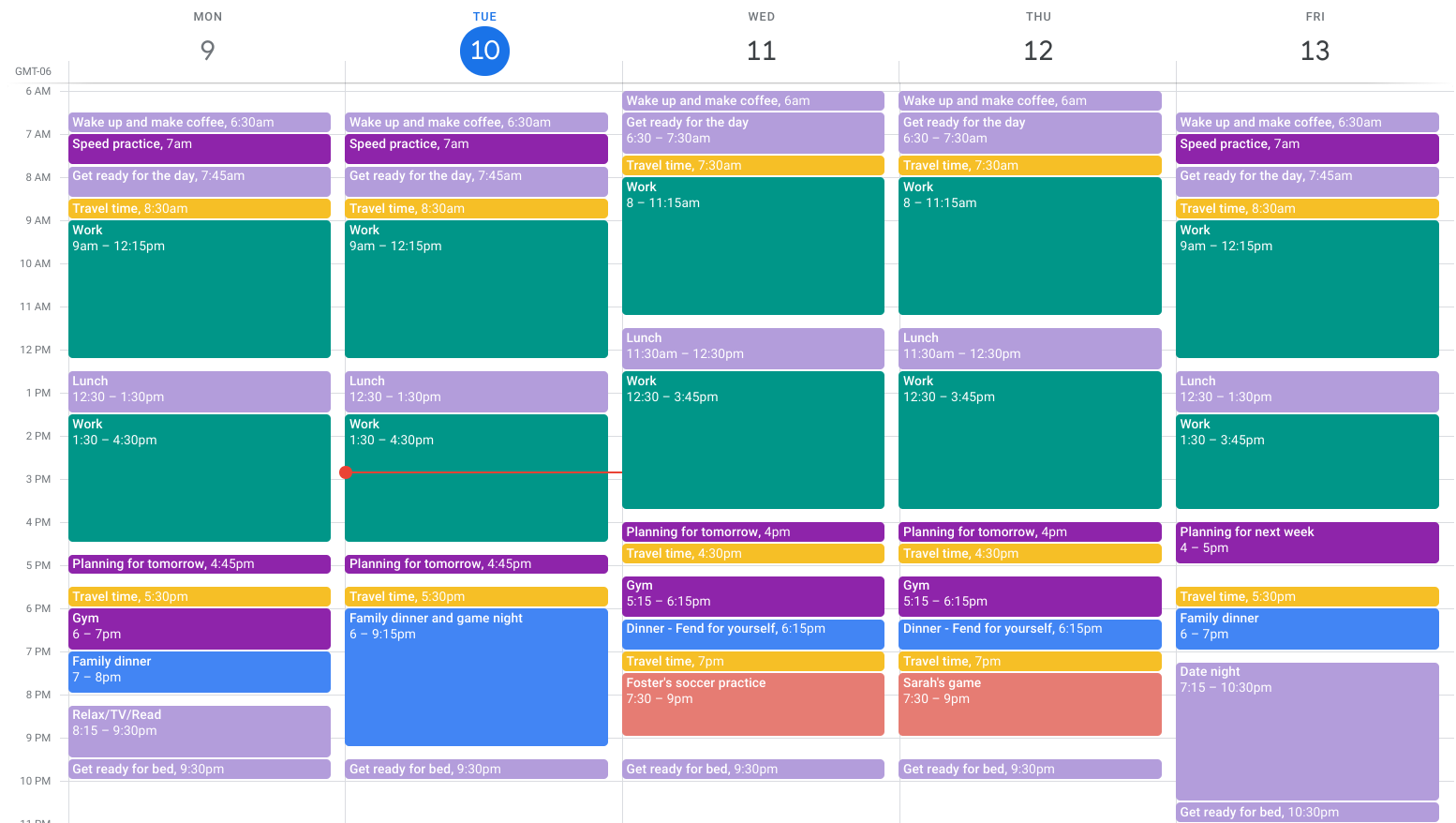
Notice how she has blocked out time each morning for speed practice. She also has time in the late afternoon to plan out her next day, as well as family time and gym time blocked off in the evenings.Â
Here’s an example of a freelance reporter’s time blocked schedule:
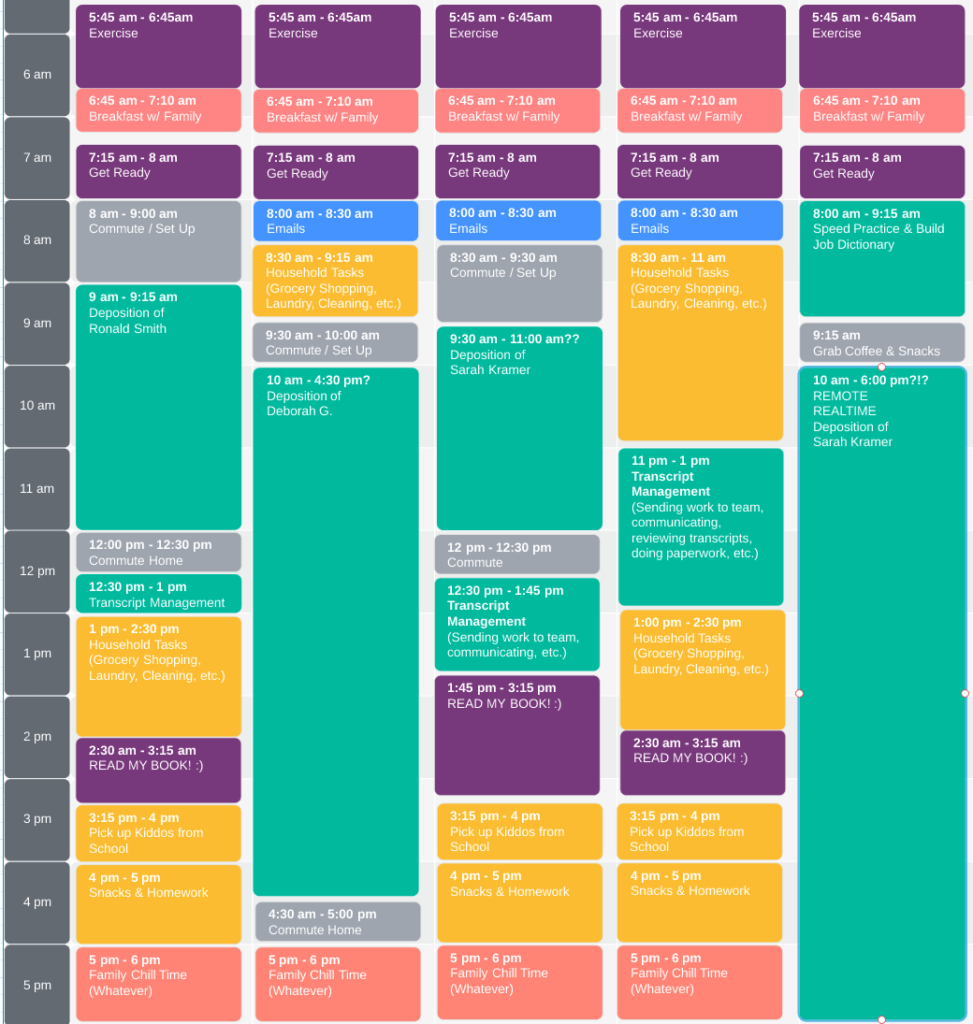
The reporter with the above schedule is using Stenovate to manage all of her transcript “homework” w/ her team of scopists and proofreaders. If she were trying to do all the work herself, you wouldn’t be seeing any purple “self-care” time during the day, and her evenings (which we don’t show here) would likely be covered in more green blocks for “scoping” and “proofing.”
We’ll talk more in Lesson 6 about how delegating work to scopists and proofreaders can completely change the look and feel of your schedule…and your life.
Stick to your weekly template as much as possible. Focus on work during your work blocks, family during family blocks, and yourself during personal blocks.Â
Also, don’t worry if you have to move things around. That’s what the blocks are there for. You can move them and stack them any way you like. Just note that it’s important to stick to the schedule as much as possible to avoid overworking, burning out, and sacrificing precious self-care and family time, which can be really easy to do in our profession. We’ll talk more about that in the next lesson!
4. Schedule time for yourself and your “guilty pleasures.”
Just because you’re a productivity machine doesn’t mean you can’t have fun! Block off time for yourself, even if it means indulging in your favorite “mindless activities”: Netflix, social media, baking, or bubble baths. Whatever floats your boat!
Remember, distractions aren’t distractions at all when you schedule them. Take breaks to rejuvenate so you can be refreshed for focused time. #Balance
5. Include “buffer time†in your schedule.
Your day will rarely go according to schedule, even with a perfect, time-blocked calendar.Â
You can plan for this by adding buffer time to your calendar — 10-20 minutes between tasks to account for spillovers.Â
Buffer time, also called a “transition” can be important for recalibrating before your next obligation.
Here are a few ways to transition between types of activities:
→ Grab a healthy snack (like an apple) and enjoy it mindfully. Notice the juicy deliciousness!
→ Do some simple stretching, listening to your body.
→ Do a short meditation (find one on YouTube if you don’t have an app like Headspace or Calm)
These simple activities can reset and refresh your brain, switching you out of “work mode” into “family mode.” It’s like a palate cleanser!
6. Review your schedule daily.
We know the life of a court reporter is hectic. Plans can change throughout the week — even the same day!
Depositions wrap up early, go over time, and/or get canceled at the last minute. There’s nothing you can do about this except stay flexible.Â
In addition to scheduling your week, plan time to review your upcoming day’s schedule. This added scheduling time helps keep your calendar accurate.Â
Many reporters don’t get their next day’s schedule until around 3:00 or even 5:00 p.m. If that’s the case, you’ll want to do your “tomorrow planning” after you’ve received your next day’s job assignments.
Focus on planning, not perfection.
Even if your day doesn’t go perfectly, the act of time-blocking is crucial for productivity. It prevents distraction, helps you prioritize your most important tasks, and protects your personal life. It’s one of those “life-changing†habits if you do it consistently.Â
Time blocking isn’t meant to make your life rigid and inflexible. Don’t treat it like a set of laws, but a guide to help you get the most out of each day.
Every person’s time blocking template looks different. Start experimenting to figure out what works best for you.Â
Even the best plan won’t be useful if you don’t protect your time. More on that in Lesson 4: Setting Boundaries
Get Stenovate’s entire eCourse in time management for reporters delivered straight to your inbox by registering here at any time.
â¬…ï¸ Go to Lesson 2 | Go to Lesson 4 ➡ï¸

